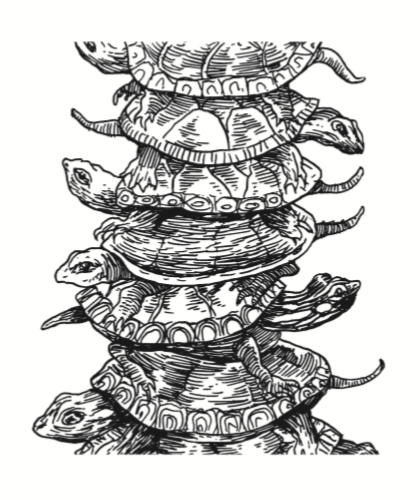I. Two great tastes that go great together
We could begin in fifteenth-century Genoa with the invention of fixed currency and modern banking, or with the first foreclosure of this current crisis just a couple years back. I’m going to begin near the middle: in the nineteenth-century United States, with banks and railroads.
Railroads being too pricey even for the well-heeled capitalist, banks that could provide grand lines of credit became major players. This concert of powers dominated the nation’s finances, extending the financial network even as they exerted increasingly centralized control. They were only too willing to loan the money forward, both for stakes in the enterprises and in the happy knowledge that the intercontinental railroad would open up new markets. Credit doesn’t just allow for such expansions; it requires them, to conjure its necessary returns.
The relationship was so intimate that sometimes it collapsed into singularity. Chartered in 1833, the Georgia Railroad and Banking Company built a then-lengthy line from Atlanta to Augusta; the firm survives as a real-estate concern. Its rail system now belongs to massive CSX Transportation; the banking division was a part of Wachovia, which was nearly obliterated this September and has under Federal duress recently merged with Wells Fargo, which started in 1852 as a transport and banking company. Two great tastes that go great together.
The salient point is this: that the expansion of the rail systems throughout physical space, sewing together the continental United States with threads of iron, was identical to the credit-fired expansion of financial networks. Not parallel developments, but one and the same. Geopolitical space and finance space are simply different dimensions of the same structure, the same unified market—what we might call geofinancial space.
II. Drinking Pabst Blue Ribbon in Silver Lake
The morning air reeks of volatility and fear, the way I always imagined nitroglycerin would smell. In the unfolding of the present crisis, we see “the illuminated surface of events,” in the words of the great historian Fernand Braudel. Massive companies merge, fail, are bailed out; it’s on the front page of reality. Unemployment and income figures flash from every marquee. This is the layer of the market economy. The layer below, that of daily life and what people do with their days in times like these, is hard to see beyond one’s neighborhood, which may not itself be a good representation. They are still drinking Pabst Blue Ribbon in Silver Lake and Williamsburg—now with less irony.
Even more opaque is the layer above the market: the finance economy, with its impossibly complex derivatives, its futures and hedge funds, its credit default swaps and collateralized debt obligations ad infinitum. Rather than...
You have reached your article limit
Sign up for a digital subscription and continue reading all new issues, plus our entire archives, for just $1.50/month.
Already a subscriber? Sign in





